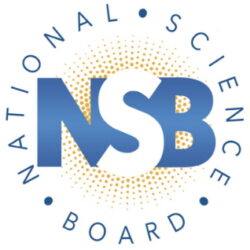In Defense of the Trigger Warning
 In August, the University of Chicago sent a welcome letter to incoming students. The letter emphasized its “commitment to freedom of inquiry and expression… without fear of censorship.”
In August, the University of Chicago sent a welcome letter to incoming students. The letter emphasized its “commitment to freedom of inquiry and expression… without fear of censorship.”
“Our commitment to academic freedom’, it continued, “means that we do not support so-called ‘trigger warnings’… [or] academic ‘safe spaces’ where individuals can retreat from ideas and perspectives at odds with their own.”

This article by Ika Willis originally appeared at The Conversation, a Social Science Space partner site, under the title “In praise of trigger warnings”
In the fraught debate over trigger warnings in the university classroom, warnings are routinely associated with censorship, silencing, and “coddled millennials” fleeing to the safety of spaces where their views will not be challenged.
Recently on The Conversation, for instance, Marguerite Johnson referred to Columbia Unviersity’s Multicultural Affairs Advisory Board, which had suggested trigger warnings for Ovid’s Metamorphoses, an epic poem containing fifty rapes. Johnson wondered whether such warnings
would censor discussions of rape and shut down interrogations of sex, violence, and female exploitation.
Yet from the teacher’s point of view, trigger warnings can be one way we enable students to negotiate the risks of literary reading in an informed and critical way. They are designed to open up a discussion of difficult material – not suppress it.
Academic Freedom in Crisis: The Series
Diversity of Viewpoints is Essential for the Pursuit of Knowledge | Jo WilliamsEmotionalisation, Neoliberalism and Academic Freedom in the US | Sam Binkley
The Transformation of UK Higher Education Since 1968 | Hugo Radice
The Soviet System, Neoliberalism and British Universities | Craig Brandist
The Financialisation of Academic Knowledge Production | Dylan Kerrigan
The Never-Ending Audit®: Questioning the Lecturer Experience | Daniel Nehring
More thoughts
Academic Freedom and Freedom of Speech Must be Protected and Respected | Valerie Adams
Thoughts on Academic Freedom (and Our Series) | Various
Take Away Tenure, and Professors Become Sheep | Alice Dreger
In Australia, Academic Contracts Threaten Freed Speech | Katharine Gelber
I first used trigger warnings for a novel I taught in a course on children in literature. Students sometimes misread this as a children’s literature course and indeed we did read texts like Sendak’s classic picture book Where the Wild Things Are (1963).
But the curriculum also included Dennis Cooper’s My Loose Thread (2002), which includes multiple graphic descriptions of child rape and violent assault from the perpetrator’s point of view, and is narrated in a voice which is both irresistibly immersive and terrifyingly affectless.
Cooper’s novel is a grueling read. I would have found it difficult, practically and ethically, to teach this material to students who had not consented to engage with it, so I gave extensive advance warnings.
My experience couldn’t have been further from the censorship and retreat from confrontation that the University of Chicago fears. All the students in the class read the novel and all participated in some of the best class discussion I have ever seen, managing to articulate their intense responses to the novel and to negotiate their profound disagreements respectfully.
Trigger warnings facilitated this, giving students time to manage their responses and acknowledging that the text was designed to solicit intense reactions.
Students, as well as teachers, see trigger warnings as a way of opening up discussion rather than closing it down. In the case of Columbia’s suggestion of a trigger warning for Ovid, the Multicultural Affairs Advisory Board collectively wrote an op-ed for the Columbia Spectator, telling the story of a sexual assault survivor who was required to read Ovid’s accounts of the rapes of Persephone and Daphne for a compulsory class. In the seminar,
her professor focused on the beauty of the language and the splendor of the imagery… As a result, the student completely disengaged from the class discussion as a means of self-preservation.
Those who have experienced trauma, such as anonymous feminist blogger The Feminist Hulk, have described how helpful warnings can be. She wrote in an archived post from 2014:
having these warnings has never led me to disengage from the material – what it does is allow me to prepare for the way the material will affect me, so that I can function in class.
The thing that makes me disengage is when I don’t have any preparation and am blindsided by flashbacks [to the original traumatic experience] in the middle of class.
Reading Resilience is an ANU-led project which has investigated effective ways to engage students in reading texts that are regarded as demanding – intellectually, aesthetically, and emotionally – from Jean-Jacques Rousseau’s Confessions (1782) to Alison Bechdel’s Fun Home: A Family Tragicomic (2006).
Its authors, who worked together from five Australian universities, write:
the kind of reading we are asking our students to engage in is a profoundly risky and anxiety-promoting act … Our role is to find ways of enabling students’ reading resilience so that their sense of these risks, or their direct encounters with them, do not result in their giving up reading the texts we set for them.
Trigger warnings are another important way of enabling reading resilience and helping students manage the demands and risks of literary reading.
A postscript to my class on children in literature
One student, who had been especially engaged in the class discussion, came to me days before her final essay was due. She had written most of an essay on My Loose Thread, but she wasn’t sure whether she would be able to finish it.
The night before, she had committed a housemate to psychiatric care. He had been becoming increasingly ill over months in ways that resonated, for my student, with Cooper’s protagonist. Her engagement with the novel had helped her cope with her housemate’s situation, but now she couldn’t find the critical distance that she needed to finish the essay.
I told her to write on Where the Wild Things Are instead.
My Loose Thread had been important for this student, and she had learned a lot from it – but not in a way that dovetailed with the university’s strictly timed assessment regime.
Sometimes we need to know when not to engage with a text: this, too, is a necessary skill that we learn as readers and pass on as teachers – and trigger warnings can help us do it.![]()























































































